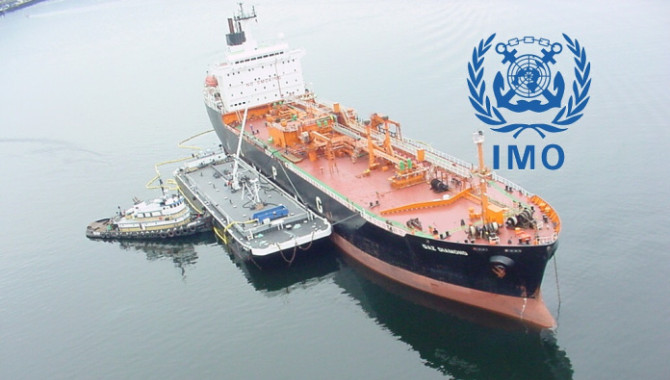
The oil market is likely to tighten further in the second half of the year due to further supply restraints and relatively healthy demand, with IMO 2020 potentially pushing Brent crude toward $80/b by end-2019.
S&P Global Platts Analytics believes the market is relatively tight in terms of the supply and demand balance and that it’s likely to be only a matter of time before that is reflected in global oil prices.
“The market is weak today because you have the macroeconomic environment but you also have the fact you have a record amount of refinery shutdowns in May and spilling over to June partly because of Asia refinery shutdowns but also 200,000 b/d of lost refinery throughput as a consequence of Druzhba,” the head of Platts Analytics’ Chris Midgley said at a briefing referring to the ongoing disruption of Russian crude exports via the key pipeline network to Europe.
However, the logic of Brent crude trading just above $60/b was thrown into question, with funds reluctant to get on to the long side of the market and he indicated there was strong support at that $60 level.
“The fundamentals are supportive of [higher prices] but we have seen very little acknowledgement of fundamentals and a very wide traded range,” he added, noting on the demand side that for the global economy “the signals aren’t that bad.”
While worries around the global economy were getting more headlines, Midgley pointed to reasonably solid China and India demand. The US has been holding up well thanks to infrastructure spending, with the US Federal Reserve now more likely to cut interest rates that will also help support emerging economies.
Platts Analytics sees global economic growth of around 3.3% in 2019 and oil demand growth of 1.36 million b/d, playing down macroeconomic fears and the impact of the trade disputes the US has been engaged in with Mexico and China.
Moreover, the refinery demand drop off for maintenance in May and June has masked the crude demand picture.
“The second half has strong demand of 4-5 million b/d from refineries coming back from maintenance, then a spike in refinery runs at the end of the year partly related to IMO 2020,” said Midgley,
The bullish oil demand case is made stronger “because you also have extra demand driven by IMO and you should see a small premium on sweeter grades of crude, and we are talking Brent and WTI, that could be somewhere in the range of $3-6” to the price. New rules around fuel specifications that will see the majority of shippers switch to cleaner marine fuel, known as IMO 2020, will see refiners needing lighter sweet crudes in a bid to produce more middle distillates and creating extra demand.
OPEC ROLLOVER
Midgley highlighted a number of geopolitical risks to an already tightly supplied market, including Libya, where he could see 700,000 b/d in lost production “at any point.” Libya’s production is around 1.1 million b/d but has dropped to 400,000 b/d when its political tensions between the East and West of the country flared up and disrupted operations.
He said Nigeria has “some challenges,” Iran has “sanctions biting,” Iraq is being squeezed between Saudi Arabia and Iran and is less safe and secure, and Venezuelan output is likely to decline further as tougher US sanctions push more US workers out of the country form July 27.
Platts Analytics also sees OPEC and its alliance with Russia and other non-OPEC countries keeping the current 1.2 million b/d production cut deal in place with some form of rollover. While a date for the next OPEC meeting remains up in the air, the group will need to meet once its current deal expires at the end of June to decide on the next course of action. Midgley speculated that the OPEC meeting will likely roll over the cuts and maybe provide some wiggle room with an average quota rather than a ceiling quota.
Midgley also believes Saudi Arabia was focused on getting oil prices above $70/b, noting that the “Saudis will be keeping the cuts until they have the market where they want it.”
However, this could lead to a sharply tighter oil market as “Saudi Arabia needs to be producing 10.5 million b/d in the second half above their 10.3 million b/d quota if you look at demand balances.”
Source:Platts
The opinions expressed herein are the author's and not necessarily those of The Xinde Marine News.
Please Contact Us at:
admin@xindemarine.com


 Ningbo Containerized Freight Index Weekly Commentar
Ningbo Containerized Freight Index Weekly Commentar  Ningbo Containerized Freight Index Weekly Commentar
Ningbo Containerized Freight Index Weekly Commentar  Ningbo Containerized Freight Index Weekly Commentar
Ningbo Containerized Freight Index Weekly Commentar  BIMCO Shipping Number of the Week: Bulker newbuildi
BIMCO Shipping Number of the Week: Bulker newbuildi  Ningbo Containerized Freight Index Weekly Commentar
Ningbo Containerized Freight Index Weekly Commentar  Ningbo Containerized Freight Index Weekly Commentar
Ningbo Containerized Freight Index Weekly Commentar